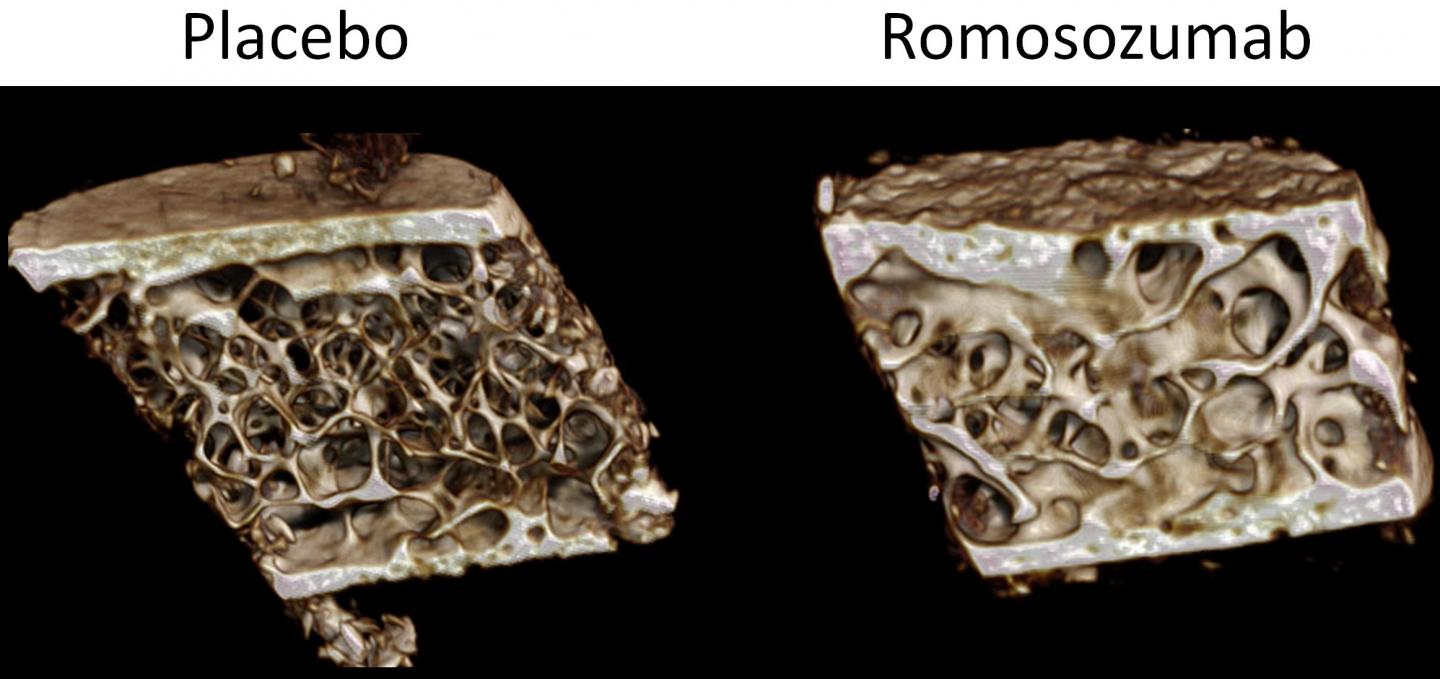
Credit: Dr. Pascale Chavassieux
Sclerostin is a protein produced by osteocytes in the bone that inhibits bone formation. A recent analysis of results from a clinical trial reveals the beneficial effects of romosozumab, an antibody therapy that targets sclerostin, on bone tissue in postmenopausal women with osteoporosis. The findings are published in the Journal of Bone and Mineral Research.
Romosozumab increases serum markers of bone formation and decreases those of bone breakdown, or resorption. This is associated with an increased bone mineral density and a reduced risk of bone fractures.
This latest analysis included 107 patients with osteoporosis who were enrolled in the multicenter, phase 3 clinical trial called the Fracture Study in Postmenopausal Women with Osteoporosis (FRAME) study and who underwent bone biopsies. The analysis showed that at the tissue level, romosozumab produced an early and transient increase in bone formation and a persistent decrease in bone resorption. This led to significant increases in bone mass and improved bone microarchitecture (Figure) after 12 months of therapy. These effects contribute to the reduced fracture risk previously reported in postmenopausal women with osteoporosis treated with romosozumab.
“Romosozumab is the first osteoporosis therapy with a dual effect on bone tissue, increasing bone formation and decreasing resorption” said lead author Dr. Pascale Chavassieux, of the University of Lyon, in France.
###
Media Contact
Penny Smith
[email protected]
Related Journal Article
http://dx.




